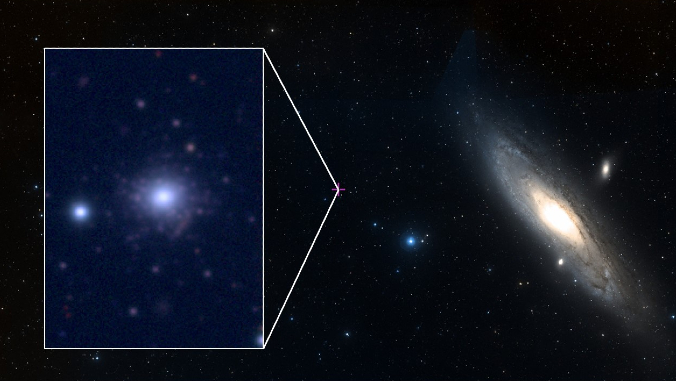
Astronomers on Maunakea found a massive star cluster in the Andromeda Galaxy, the closest large galaxy to our Milky Way. The stars in the globular cluster, called RBC EXT8 were found using the W. M. Keck Observatory and Canada-France-Hawaiʻi Telescope.
Observations show RBC EXT8 contains a record-breaking low amount of metals. The discovery puzzled astronomers because it challenges the thought that such formations had to contain a considerable amount of heavy elements.
The study, led by Søren Larsen of Radboud University in the Netherlands, is published in Science. University of California Observatories astronomer Aaron Romanowsky co-authored the study.

“I’m amazed that this remarkable star cluster was just sitting under our noses. It is one of the brightest clusters in the Andromeda galaxy and known for decades, yet no one had checked it out in detail. It shows how the universe still has many surprises for us to discover,” said Romanowsky.
- Related UH News story: Keck astronomer awarded Nobel Prize for trailblazing black hole research, October 8, 2020
A globular cluster is a large, dense collection of thousands to millions of ancient stars that move together as a tight-knit group through a galaxy. Astronomers found the cluster is extremely deficient in magnesium and has the lowest metal content ever seen in a globular star cluster. On average, RBC EXT8 has 800 times less iron than the Sun and is three times more iron-poor than the previous globular cluster record-holder.
In the future, researchers hope to find more “metal-lite” globular clusters and solve the mystery about their origin. For more on RBC EXT8, read the full story on the Keck Observatory website.

